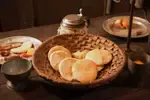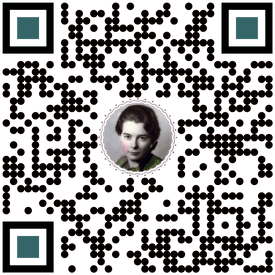- Home
- Renaissance Desserts
- Renaissance Pie Recipes
Renaissance Pie Recipes
You will have fun trying these Renaissance pie recipes that include an early recipe for making pumpkin pies. Ingredient quantities aren't given, but history records that such pies were often preferred very sweet, so be generous when adding sugar.
Authentic Renaissance Pie Recipes
The Queen-like Cloſet or Rich Cabinet (1672)
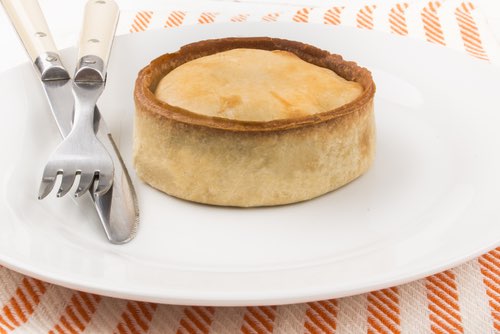 Homemade Renaissance Pie
Homemade Renaissance Pie(Source: ©Szakaly/Depositphotos.com)
Some of the ingredient combinations called for in these historic Renaissance pie recipes might seem a bit unusual to our modern palettes, but these early dessert pies are quite delicious when judged on their own merits.
Enjoy trying the early herb, minced meat, and pumpkin pie recipes from the time of Shakespeare.
To make good minced Pies
Suet Substitute
Freeze an equal amount of shortening until firm, then pulse it in a food processor to create nugget-sized pieces. Butter can NOT be used.
Take one pound and half of Veal parboiled, and as much Suet, ſhred them very fine, then put in 2 pound of Raiſins, 2 pound of Currans, 1 pound of Prunes, 6 Dates, ſome beaten Spice, a few Caraway ſeeds, a little Salt, Verjuice, Roſewater, and Sugar, to fill your Pies, and let them ſtand one hour in the Oven; When they go to Table ſtrew on fine Sugar.
To make a Pumpion Pie
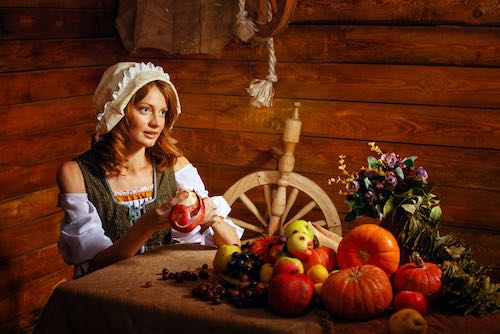 Preparing Ingredients for Renaissance Pumpkin Pie Recipe
Preparing Ingredients for Renaissance Pumpkin Pie Recipe(Source: ©Vagengeym/Depositphotos.com)
An early recipe for making a delicious pumpkin pie with raisins, currants, and tart tasting apples with an engaging YouTube video from Tasting History that demonstrates how to make it.

Take a Pumpion, pare it, and cut it in thin ſlices, dip it in beaten Eggs and Herbs ſhred ſmall, and fry it till it be enough, then lay it into a Pie with Butter, Raiſins, Currans, Sugar and Sack, and in the bottom ſome ſharp Apples; when it is baked, butter it and ſerve it in.
To make an Herb Pie
Take Spinage, hard Lettice, and a few ſweet herbs, pick them, waſh them, and ſhred them, and put them into your Pie with Butter, and Nutmeg, and Sugar, and a little Salt, ſo cloſe it and bake it, then draw it and open it, and put in Clouted Cream, Sack and Sugar, and ſtir it well together, and ſerve it in.
A Friday Pie without Fiſh or Fleſh
Waſh a good quantity of green Beets (the tops only), and pluck out the middle ſtring, then chop them ſmall, with two or three ripe Apples well reliſhed, ſeaſon it with Pepper, Salt, and Ginger, then add to it ſome Currans, and having your Pie ready, and Butter in the bottom, put in theſe herbs, and with them a little Sugar, then put Butter on the top, and cloſe it and bake it, then cut it up, and put in the juice of a Limon and Sugar.
About Renaissance Pies
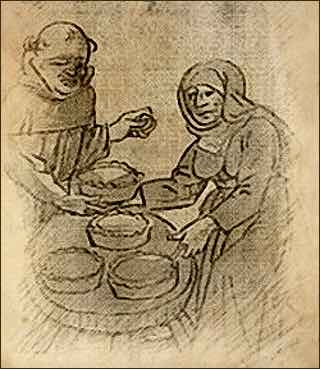 Making Renaissance Pies
Making Renaissance PiesPies in the Renaissance Era often were flavored with wine, nuts, fruits, herbs, spices, and minced meats. Seventeenth century pies were usually smaller and chewier than today's pies, spiced, and highly sweetened with sugar or honey. And they were very similar to today's scotch pies in appearance though some were baked as an open pie without a top crust.
Their edges were often crimped for decoration and on festive occasions, their top crusts were decorated with comfits and molded sugar paste, and they had flavored sugars strewn over them. Violet and rose flavored sugars were favored.
Sometimes, the top crusts were extravagantly gilded with an edible gold leaf when served to nobility at royal banquets.

Gum Dragon and 23kt edible Gold Leaf are not easy to find locally, so here's where to get the historical ingredients called for in some Renaissance recipes.

Curious about that strange ſ character in words? Wondering about historical ingredients and cooking methods? Go to the Glossary of Renaissance Cooking Terms for help.
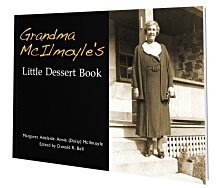
Sign Up now for GRANDMA'S DESSERT CLUB and download your FREE PDF COPY of Grandma McIlmoyle's Little Dessert Book. Also receive my regular Bulletin featuring classic recipes and nostalgia.


